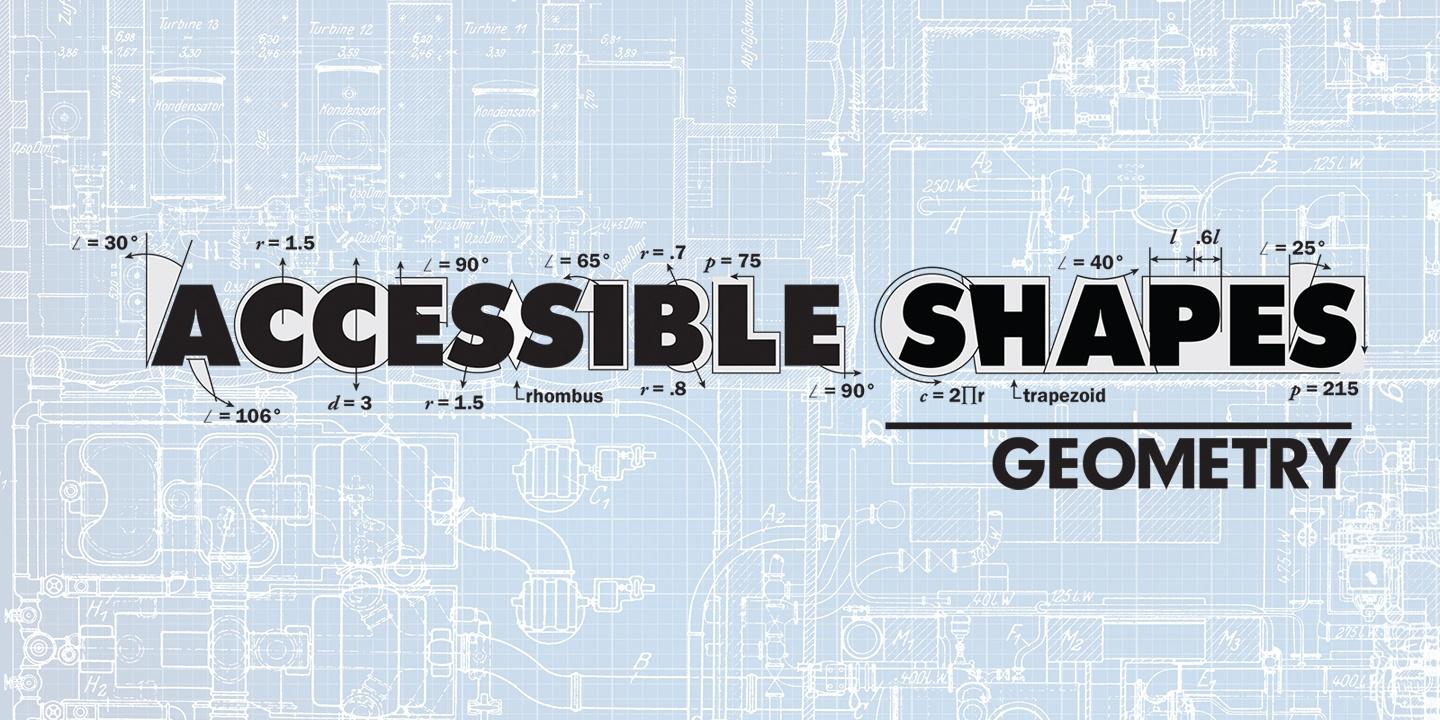
Accessible Shapes: Geometry
Students will learn about spatial visualization; surface area and volume; and the study of lines, angles and two- and three-dimensional shapes.
Videos for Accessible Shapes: Geometry
Geometry and Spatial Sense — Student
This unit asks students to look at building models and determine what they would like from the top, right, left, front and back. Google Earth shows them a building from the top and from the sides so that they can see real-life examples of the activities that they will be doing.
The video also describes topographic maps, which are maps that show the elevation of a land mass.
Geometry and Spatial Sense — Professional Development
Have you ever lost your car in the parking lot? Or given bad directions? Both tasks require spatial reasoning. Historically, we have considered spatial thinking to be less important than other subjects in the school curriculum. A recent report from the National Research Council says that spatial literacy is important. “In Learn to Think Spatially, a study group chaired by Roger M. Downs of Pennsylvania State University states that without explicit attention to [spatial thinking], we cannot meet our responsibility for equipping the next generation of students for life and work in the 21st century.” This video explains a specific plan for a hands-on, fun approach to teaching this topic.
Angles, Triangles and Quadrilaterals — Student
The key concept in this unit is the mastery of the vocabulary and concepts of angles, triangles and quadrilaterals. In the video, students see that these shapes are everywhere — they support the roof over their head and keep bridges from falling down. They gain an understanding of how these shapes impact life.
Angles, Triangles and Quadrilaterals — Professional Development
This video describes the key concept of this unit, which is the understanding of the vocabulary and concepts of angles, triangles and quadrilaterals. Each lesson is built upon the one before it. Formative assessments are placed throughout the lesson so that the teacher can determine if mastery has been achieved.
Surface Area and Volume — Student
This video provides an introduction to finding the volume and surface area of rectangular prisms and of cylinders. The example of a swimming pool is shown. Is filling the pool the volume or the surface area? Is painting the empty pool the volume or the surface area?
Surface Area and Volume — Professional Development
This video explains the concept of the unit on surface area and volume.
Educational Resources
Produced: 2011
Subject Area: Mathematics
Grade Level: 6
Resources: Accessible Shapes: Geometry Teacher Guide
Student Videos
This unit asks students to look at building models and determine what they would like from the top, right, left, front and back. Google Earth shows them a building from the top and from the sides so that they can see real-life examples of the activities that they will be doing. The video also describes topographic maps, which are maps that show the elevation of a land mass.
The key concept in this unit is the mastery of the vocabulary and concepts of angles, triangles and quadrilaterals. In the video, students see that these shapes are everywhere — they support the roof over their head and keep bridges from falling down. They gain an understanding of how these shapes impact life.
This video provides an introduction to finding the volume and surface area of rectangular prisms and of cylinders. The example of a swimming pool is shown. Is filling the pool the volume or the surface area? Is painting the empty pool the volume or the surface area?
Professional Development Videos
Have you ever lost your car in the parking lot? Or given bad directions? Both tasks require spatial reasoning. Historically, we have considered spatial thinking to be less important than other subjects in the school curriculum. A recent report from the National Research Council says that spatial literacy is important. This video explains a plan for a hands-on, fun approach to teaching this topic.
This video describes the key concept of this unit, which is the understanding of the vocabulary and concepts of angles, triangles and quadrilaterals. Each lesson is built upon the one before it. Formative assessments are placed throughout the lesson so that the teacher can determine if mastery has been achieved.
This video explains the concept of the unit on surface area and volume.